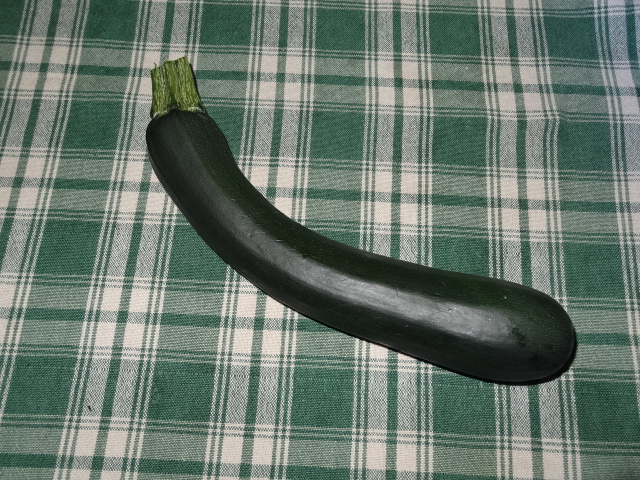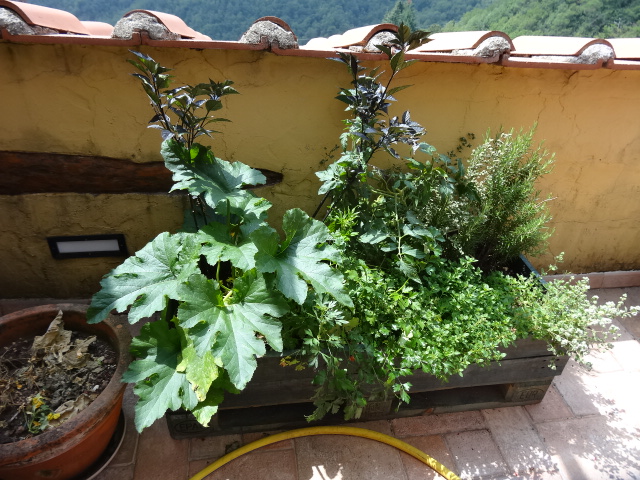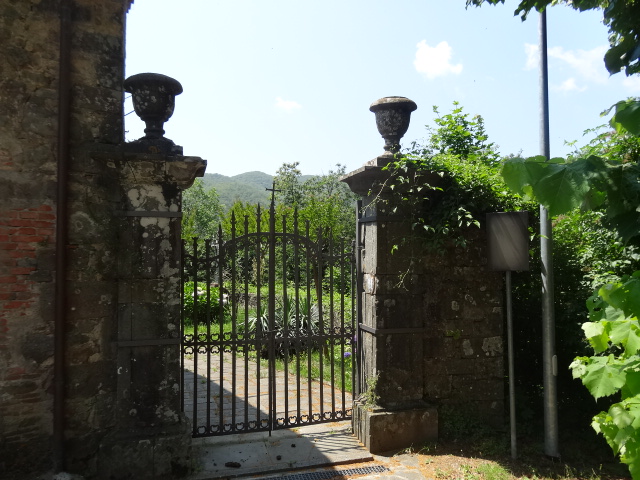 |
| No doubt, it was sad for us to see 32-year-old Lakshmi standing outside the temple, most likely day after day, waiting for treats from visitors who believe greeting her with offerings provides them with a blessing. |
Note: To all of our readers visiting our site via a smartphone, please click the “View web version” tab under the word “Home” at the bottom of the page to access the web version enabling you to access all of our archives on the right side of the page. We’ll be updating our site in a few months, making these extra steps unnecessary. Thank you.
 |
| Lakshmi was so sweet and welcoming. I patted her thick trunk and looked deep into her eye. More here: “This Ganesh Chaturthi, you can visit the extraordinary Manakula Vinayagar Temple situated approximately 400 metres away from the Bay of Bengal in White Town, Pondicherry. Read on to know why devotees, photo fanatics, and experience seekers flock to this amazing temple of Lord Ganesha.” |
The narrow two-lane highway was congested with trucks, cars, motorbikes, bicycles, and tuk-tuks with horns honking constantly, vehicles swerving in and out of traffic, and accidents waiting to happen. Another one of those Mr. Toad’s Wild Rides!
 |
| From this site about the significance of the elephant: “Symbol of wisdom, the elephant-headed Lord Ganesha is popularly known as ‘God Of New Beginnings’ and ‘Obstacle Remover.’ Such is the joyful sight one comes across during the festival of Ganesh Chaturthi. Markets are colorful with clay models of Lord Ganesha, artisans look delighted with their creations, people are shopping for sweets and decoration materials. Celebrations at places like Maharashtra, Karnataka, Andhra Pradesh, Telangana, Tamil Nadu, Kerala, and Goa are worth an experience.” |
We’re glad to be settled at another Ideal Resort, but it’s not as lovely as the last Ideal Beach Resort in Mahabalipuram, which we left three days ago. We only stay here two nights, and then we’ll be on the move again.
 |
| Lakshmi entered the temple to participate in a ceremony. |
As of yesterday afternoon, we have more photos we’ve yet to post than we possibly can add here. Finally, I figured out how to get the photos from the camera, using the new SD card reader into my Google Drive and moving them over to my Google photos. It was quite a learning curve with little supportive information online that was confusing and convoluted.
 |
| Church of the Sacred Heart of Jesus. |
More and more people are ceasing to use Windows-based computers due to the issues with Windows 10 updates, and many are moving over to Chromebooks. I suspect this will be a real turning point in the computer world.
 |
| “The church beautifully depicts the events from the life of Christ through its stunning glass panels. It also contains spectacular glass pictures of twenty-eight saints, the great devotees Jesus Christ.” |
Now, I have none. With Chromebook, one cannot leave a folder on the desktop. Everything, other than apps on a taskbar called the “shelf,” along with the ability to scroll down to see and use more apps, there is nothing on the desktop.
 |
| “The south boulevard at Subbayah Salai houses this famous church in Pondicherry, constructed by French missionaries during the 1700s. It’s a classic example of Gothic splendor, and one must visit this to experience its inner beauty and peace. |
At first, I tried to find a workaround enabling me to load icons on the desktop and finally gave up. Now, weeks later, I’m OK with this new (to me) operating system. Tom has a Samsung Chromebook, and he too has become acclimated to the new system.
 |
| The old lighthouse is no longer in use after a new one was built. |
As it turned out, I’ve had to ask him how to do a few things, and he happily complied, thrilled to be the one with tech knowledge for a change. Now I am passionate about learning every possible command that can make the system hum for me.
 |
| Giant Hindu God statue near the beach. |
As a result of the abundance of good photos from yesterday’s tour in Pondicherry, it was challenging sorting through all of them to decide which of those we wanted to share in today’s post.
 |
| A beautiful dome in the church. |
Yesterday, I began going through them, deleting duplicates and, and less preferable shots in an attempt to narrow it down. I could spend all day, every day, going through photos.
 |
| The interior at the Immaculate Conception Cathedral. |
With time at a premium based on our current schedule, I have no time to crop or edit any photos we post. They are exactly as we took them, which has generally been the case in most photos we’ve published in the past several years—no photoshopping here.
 |
| “The church is also known as Samba Kovil and is located on the mission street in Pondicherry. The church is 300 years old and one of the most senior tourist sites in Pondicherry. It was initially financed and built by Louis XIV, king of France, in 1698. Since then, the church has been rebuilt more than three times as it was demolished by the Dutch and British. “ |
Raj was ready for us yesterday morning, and after a short drive, we picked up the tour guide for the day and began the three-hour tour of the French, Hindu, and Muslim neighborhoods, referred to as “Quarters,” as in the case of the French Quarter in New Orleans in the US.
 |
| Classic French-designed property in the French Quarter in Pondicherry. |
He spoke good English, as do most of the guides, but his accent was strong, and Tom had a little trouble understanding everything he said with his lousy hearing. But, he picked up most of the content, and we both enjoyed the history lessons about Pondicherry, aka Puducherry.
 |
| Beyond this gate is a statue of Joan of Arc. |
From this site: “Puducherry formerly, Pondicherry is a Union Territory of India. It is a former French colony, consisting of four non-contiguous enclaves, or districts, and named for the largest, Pondicherry. In September 2006, the territory changed its official name from Pondicherry to Puducherry, which means “New village” in the Tamil language. The territory is called Pondichéry in French. It is also known as “The French Riviera of the East.”
 |
| The powerful symbolism of the peacock |
Pondicherry consists of four small unconnected districts: Pondicherry, Karaikal, and Yanam on the Bay of Bengal and Mahé on the Arabian Sea. Pondicherry and Karaikal are by far the larger ones and are both enclaves of Tamil Nadu. Yanam and Mahé are enclaves of Andhra Pradesh and Kerala, respectively. The territory has 492 km²: Pondicherry (city) 293 km², Karaikal 160 km², Mahé 9 km², and Yanam 30 km². It has approximately 1,200,000 inhabitants.”
 |
| More colorful figures atop a temple. |
Of course, although sad to see, one of our favorite experiences on yesterday’s tour was seeing the elephant at the Ganesha temple up close. I even had a chance to stroke her truck. Here’s information from this site on this magnificent animal:
 |
| Another temple with beautiful colorful carvings. |
“At the entrance of this temple, you will see locals as well as foreigners clicking pictures and taking videos of the elephant named Lakshmi. It is no less than a celebrity. When people offer money and food to her, she blesses them with her trunk. The sight is awe-inspiring, and crowds of people gather here to watch Lakshmi showering her blessings.”
 |
| There is a “police booth” near the Ashram, which we entered, but no photos were allowed. Locals and tourists visit from worldwide to take part in the quiet and spiritual Ashram, described as follows: “The Sri Aurobindo Ashram is a spiritual community located in Pondicherry, in the Indian territory of Puducherry. The ashram grew out of a small community of disciples who had gathered around Sri Aurobindo after he retired from politics and settled in Pondicherry in 1910.” |
As we were leaving the area after touring the temple, Lakshmi was directed into the temple to participate in a ceremony. Since we were only allowed to take photos in a tiny room, we didn’t follow her.
 |
| War memorial in Pondicherry. |
I know, I could say all kinds of things about domesticating elephants or any wild animals for that matter. But, as a guest here in India, where culture dictates that elephants may be domesticated and often “work,” I should leave those opinions to myself.
 |
| This building was filmed in making the 2012 movie Life of Pi as described here: “Pi Patel finds a way to survive in a lifeboat that is adrift in the middle of nowhere. His fight against the odds is heightened by the company of a hyena and a male Bengal tiger.” |
With little time for more details on today’s photos, please bear with us, knowing we’re doing everything we can time-wise to keep our worldwide readers updated on what we’re experiencing.
May your day be rich with experiences.
Photo from one year ago today, March 12, 2019:
 |
| It was beautiful to the male Nyala three out of four days. For more photos, please click here. |

















































